The path to conversion passes through a maze, and it is impossible to follow all the dynamic trends of eCommerce growth.
Turning every visitor into a customer is the primary goal of any business, and converting them into repeat customers is the ultimate dream.
Growth and conversion is a multi-faceted process that involves optimizing all aspects of an online business, all stages of the purchase, understanding customer intent with highly specific data, and finding innovative ways to engage customers.
The best way to navigate through the process is to move forward with selected strategies and focus all your resources on the best ones.
This needs a mix of long-term strategies and seasonal trends.
Here’s our top three consistent marketing strategies to help you achieve your long-term conversion goals.
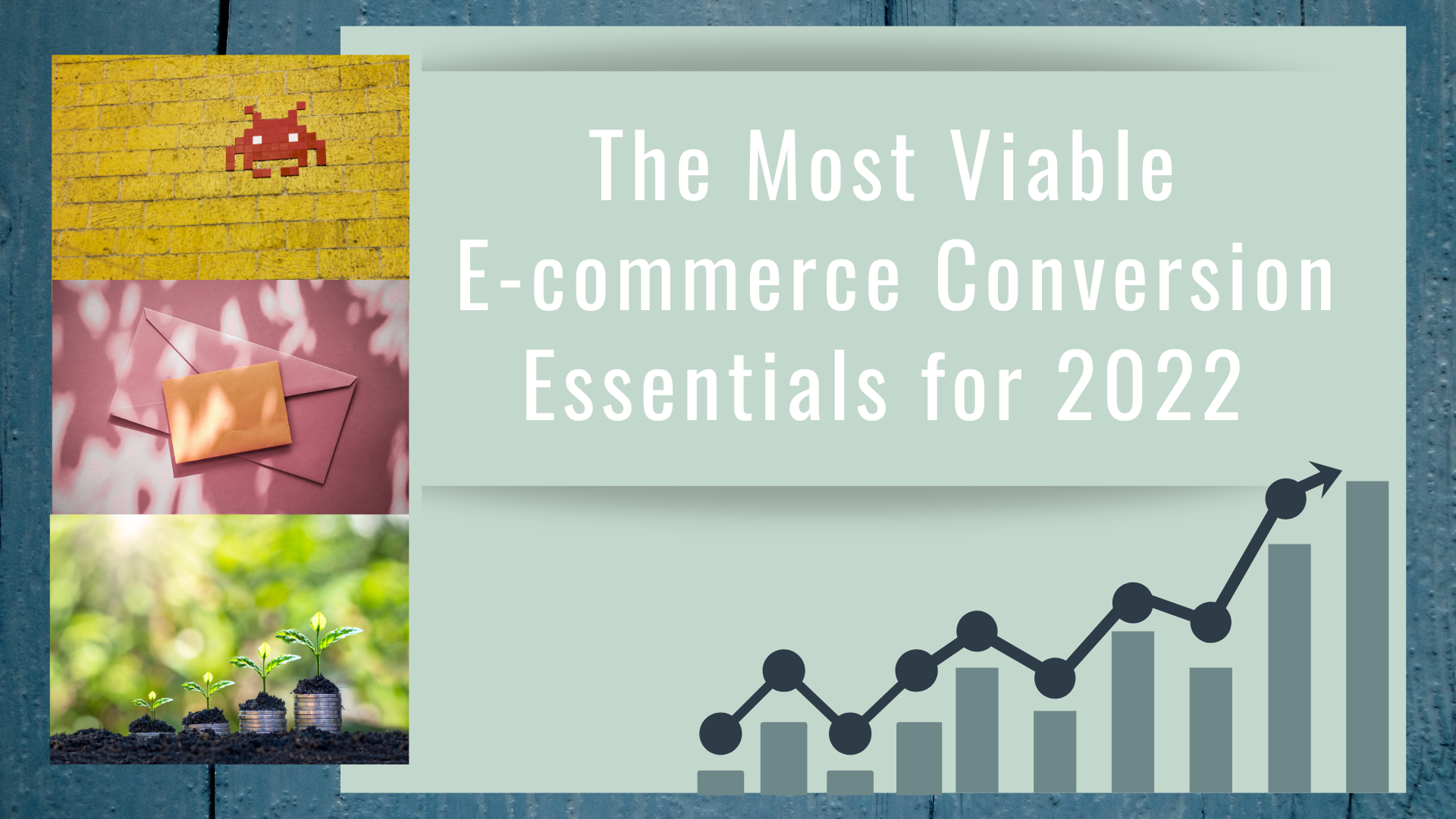
Top Three Timeless Strategies to Boost Conversion
Gamification
Since the era of chariots and gladiators, people have loved competition. And that’s exactly what makes gamification work.
In eCommerce, gamification lets your visitors interact with your website, have fun while shopping online and drive their purchase decision by triggering the psychology of winning.
Email Marketing
Email marketing is the steadiest, most reliable, and most assured way to grow a business.
The changes in algorithms might affect your strategy on social media platforms, but a user's inbox remains unaffected by these dynamic changes.
Consumers can check their email when it is convenient for them.It can give them a feeling that you are thinking of them.
Most importantly, those that have signed up for your email list have already committed to receiving your emails. So they will probably enjoy these emails (as long as you give them something worth reading) and it will boost engagement with your customers.
Optimized Customer Acquisition
The purpose of customer acquisition is to find a repeatable, methodical way of attracting customers to your business.
While you can wait for customers to find your business organically, that won’t guarantee that you increase, or even maintain profits.
Optimized customer acquisition ensures that your marketing efforts are geared towards the right direction.
Beautiful, simple reviews for your site
Easily collect, show & grow customer reviews, photos & videos for your business.Why aren’t These Strategies Working for All eCommerce Businesses?
1. Ineffective Gamification Element
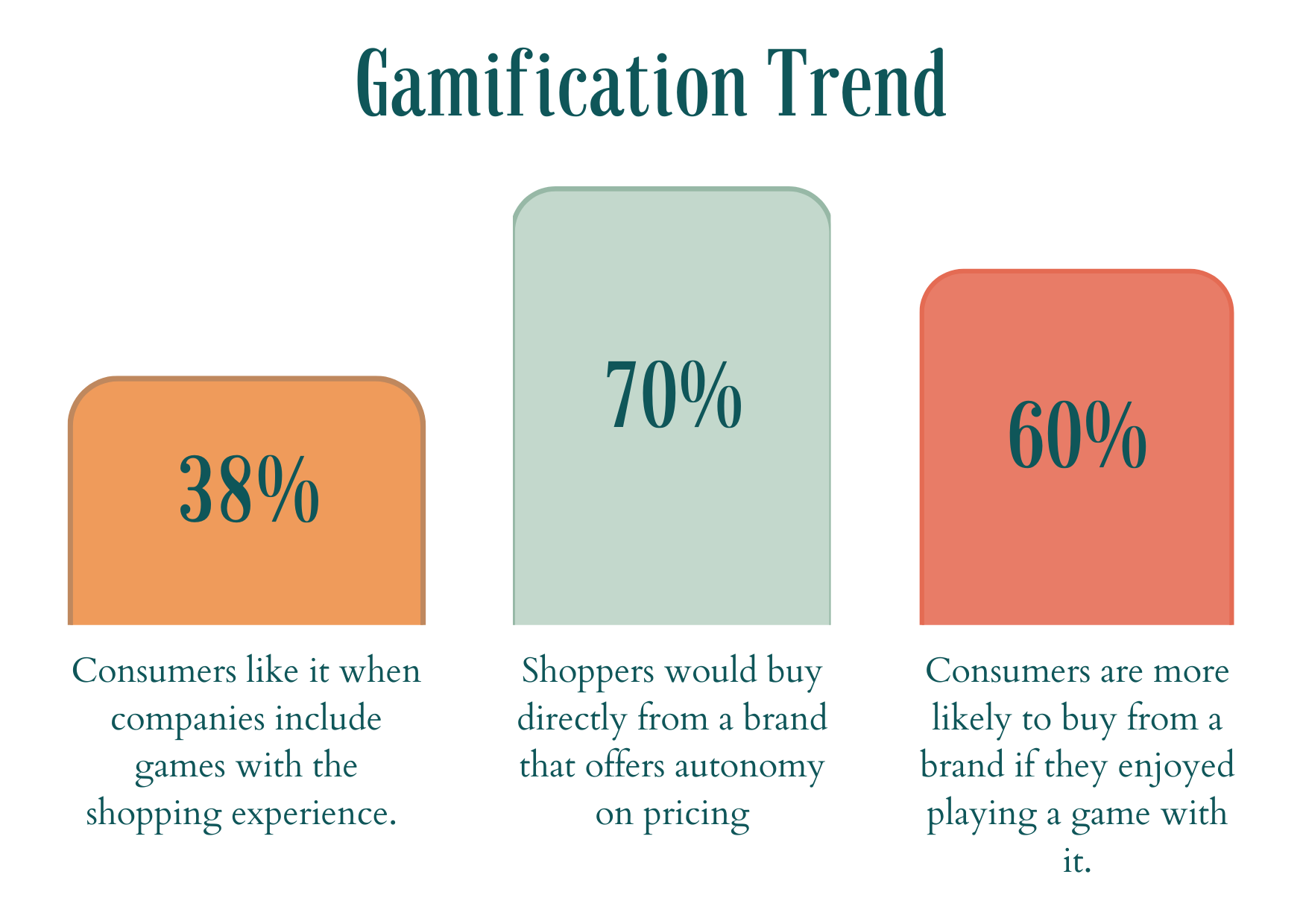
Predictable Gamification
Gamification in e-commerce has been an ever-growing trend for the last few years, but the technique is slowly becoming predictable.
With discount pop-ups, spin-the-wheel for rewards, homepage gift cards, and other gamification tools, merchants steer away visitors before they can ever check the product page.
If you want to avoid being predictable, add elements of surprise and excitement to your gamification strategy.
Give customers the option to request a custom discount on product pages instead of randomized/fixed discounts. Adding this as an incentive will increase the browsing time on your store.
Distractible Pop-ups
While business owners strive to create personalized, interactive experiences with gamification to make pop-ups less intrusive for online visitors, these techniques aren’t effective because of their lack of a truly user-friendly implementation.
Instead, give customers more control by providing them the option to initiate the gamification process so they don’t get overstimulated and annoyed by a constant barrage of unwanted pop-ups soliciting for their emails.
Predictable Rewards
Gamification in eCommerce lacks the most essential element that makes video games engaging and interactive: the increasing intensity of the challenge and the recurring nature of the game.
Create a back and forth with customers through counter-offers to their price requests from the merchant’s end to avoid predictable results and have customers continuously come back to play more.
One Time Interaction
Gamification pop-ups offer a quick one-time interaction that reduces the time spent on your website.
If an offer/discount isn’t appealing to the customer, they might leave even before they use it.
This is one of the most common obstacles to the successful implementation of gamification.
As an alternative, provide customers the opportunity to continuously interact with your gamification process so they know they can keep coming back to get the best deals.
How to Improve Gamification Strategy to Enhance Conversion
In 2022, customers are looking for that remarkable offer that is only designed for them.
While unpredictable rewards generate curiosity and excitement, visitors want the power to define the reward they receive by engaging in a customized challenge designed only for them.
As an eCommerce store looking for growth, you most likely have a gamification strategy in place.
Here’s how you can optimize it to get better results:
- Provide customization on the rewards customers receive, give customers more control and decision-making power, and increase customer engagement points.
- Merchants like 2ndhnd are using this dynamic gamification model to implement these solutions and are seeing results through an increased conversion rate as high as 45% and doing over $1.7 million in sales.
- Use tools like the "Make an Offer" button on your product pages so customers can initiate a pop-up to submit the price they are willing to pay in exchange for their email address.
- You can then have a continued interaction with bidding customers to accept, decline, or counter their offers.
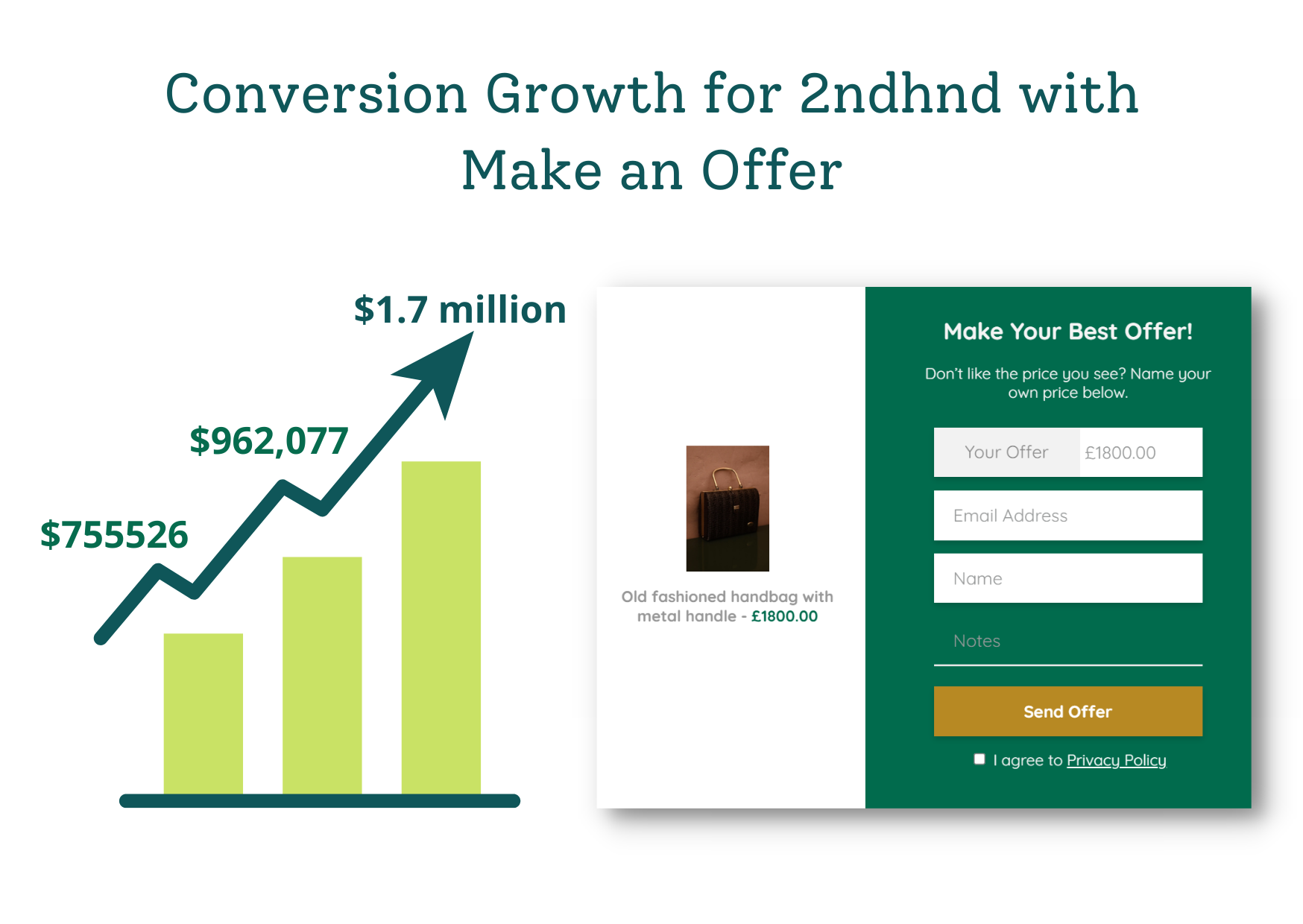
2. Lack of All-inclusive Optimization
As a business owner, you’re constantly working on optimizing your website, product pages, marketing strategy, and other countless aspects of your business.
You already know enough about optimization and feel that you’ve tried it all, but if you’re reading this, it probably means that it isn’t working out as successfully as you had hoped.
Start by asking, what does optimization truly mean? Who is this optimization for?
The business or the users?
Business-centric Optimization
Optimization is business-centric, business-centric optimization is only as effective as the benefits your visitors get from it.
Strategies such as personalization and UX optimization only work when they are designed to help the customers.
For example, a professional website with a seamless design is worthless to your visitors if there are pop-ups every three seconds.
You can instead give customers more autonomy by allowing them to initiate pop-ups and suggest pricing, giving them a reason to continue coming back to your store for that experience.
Having analytics available through these services can allow you to understand what pricing is working for your customers while still being profitable.
A more individualized pricing strategy, where each customer is a part of the process will allow you to be more dynamic and pivot with agility in a constantly changing market.
No Customer Autonomy
The end goal of optimization is to drive traffic, create engagement, increase conversion, retain customers, and create a successful system for recurring customers.
You can guide the customers’ purchase decisions by having them involved in the pricing and avoid playing the guessing game on the price point for your product.
Countering customer discount offers will keep them engaged and excited that merchants are considering their offers and willing to meet them halfway.
You can even automate the process through features that accept offers within your specified range and reject low-ball offers.
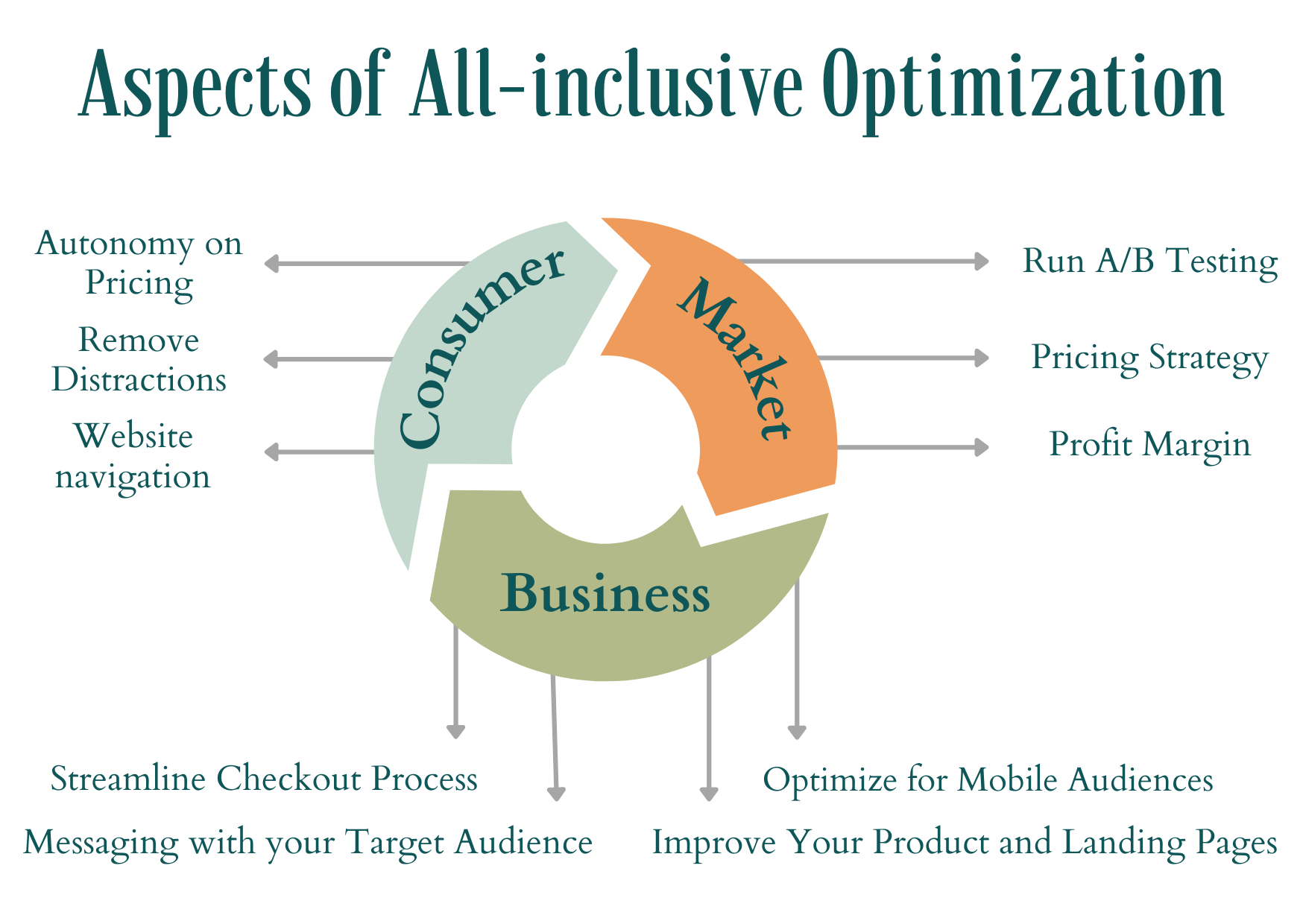
These are not unrealistic goals.
Optimization strategies are being improved and perfected by experts to ensure you achieve all these goals.
Optimization is the path to visibility, but customer retention highly depends on the customer’s perception of your optimized business.
How to Optimize Customer-oriented Aspects of Your Business
Compliment your fixed discounts by giving customers the ability to name their own price and have an interaction with them to optimize your product pricing.
The goal is not to simply make an extra sale, but to create a lifelong customer who will continue to come back because they remember the flexibility of your business.
Not only will these customers come back, but they will tell their friends and family about the customer optimization offered by your store.
3. Weak Email Collection Strategy
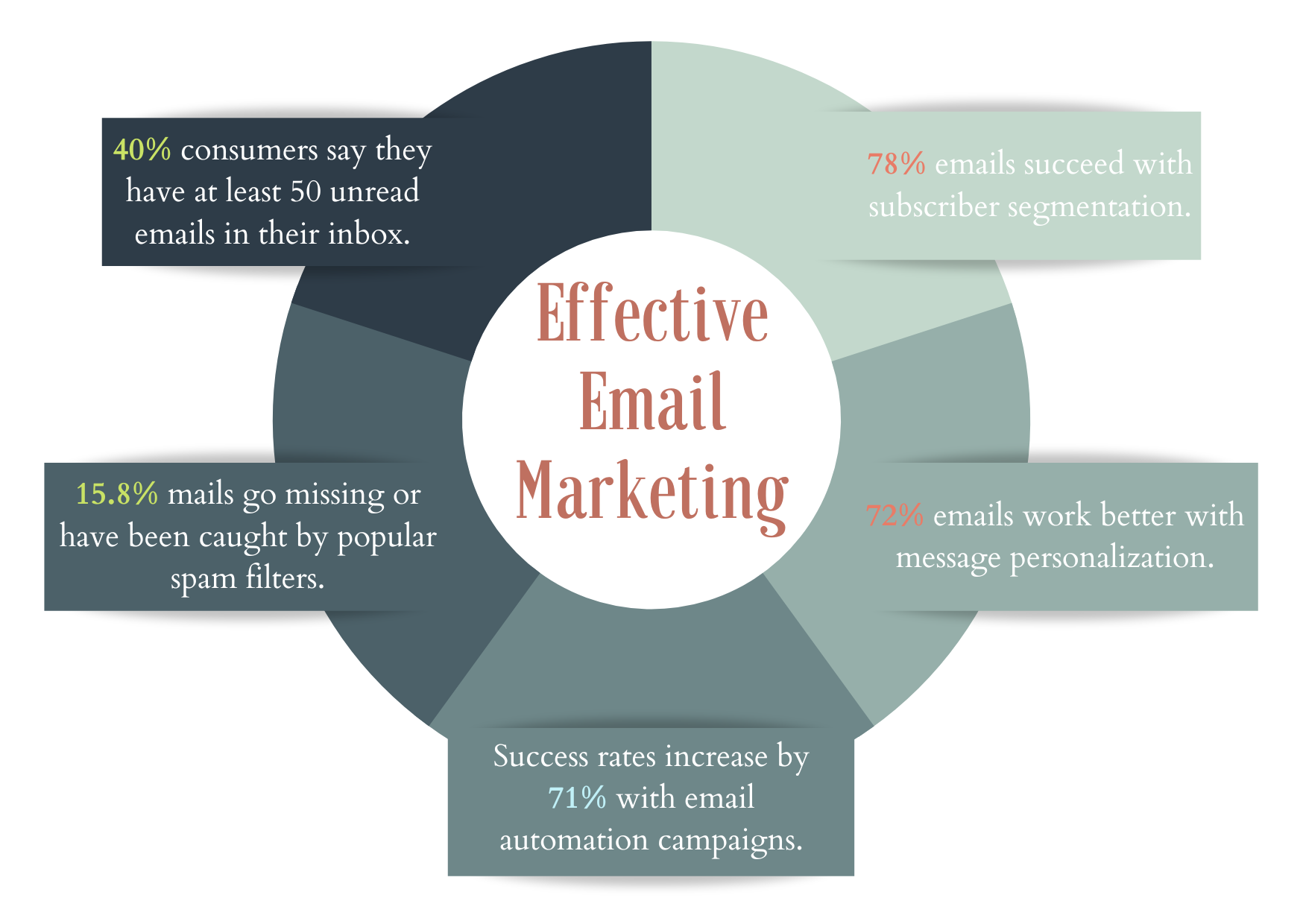
Irrelevant Email List
Email marketing is a proven tool for e-commerce success.
However, it is often under-utilized because of an insufficient or irrelevant email list. Your email marketing campaign is only as successful as the validity of your email list.
Today, email collection is only possible when a customer shows the willingness to share their email addresses.
With customers who initiate the pop-ups on a product page, not only would they be showing stronger purchase intent, but they would also be more willing to share their email.
This would provide your store with a more relevant email list of customers who have already interacted with your product pages.
Someone who has initiated an offer pop-up is much more willing to check emails from your store because they are more actively looking for deals and promotions.
Lack of Intent
With the overwhelming number of pop-ups in every store, visitors are reluctant to share personal information, such as emails, on every store they visit.
For consumers, pop-ups are distracting and more annoying than they are useful.
Customers are hesitant to follow through with their purchase because they don’t feel like they are really getting a deal by sharing their emails and they dread the solicitation that comes with it.
Ensure that customers don’t ‘Have to’ share their emails but that they ‘Want to’ share their emails.
How to Create the Most Effective Email Collection Channel
Don’t rely only on pop-ups that offer discount codes in exchange for emails.
Rather, give customers more control in initiating pop-ups on your product page so they are providing their email address for a chance to pay a custom price.
This way, you will include customers that are more relevant and make your email marketing campaigns more effective.
With a customer’s inbox filled with promotional emails from all sorts of businesses, make your email the one they want to open because they have already interacted much more with your store through submitting offers.
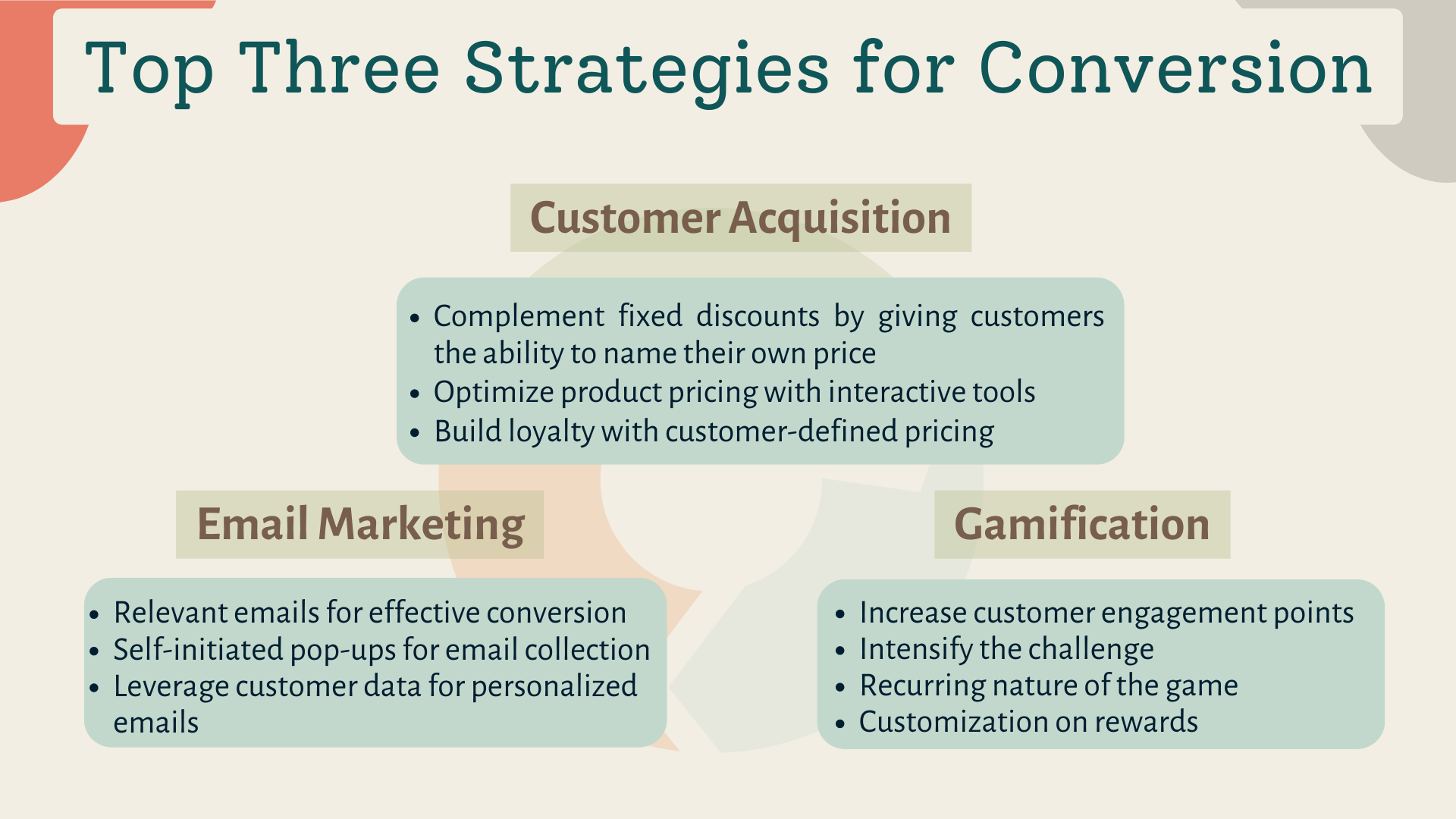
Conclusion
Getting your conversion strategy right is a challenge for most businesses. What works for one business might not work for another.
With so many strategies out there, some of the best ones to focus on today are: gamification, email marketing, and optimization of customer acquisition.
However, in a market where everyone is using the same tools to implement these strategies, customers are catching on quickly to gimmicky pop-ups that are phishing for their information.
In order to stand out, implement these conversion strategies with some creativity.
With more and more focus shifting to optimization for customers, providing the consumer with more price autonomy is the way of the future.
With more engaging gamification, customers will be given greater purchase power while you can collect shopper data to help you optimize your pricing and email marketing.
Every store today offers some form of gamification, optimization, and email collection. Be the one to stand out by creating a memorable, flexible, and autonomous experience for your customers with pricing control, self-initiated gamification, and user-centric optimization.
Guest Post by: Make an Offer









